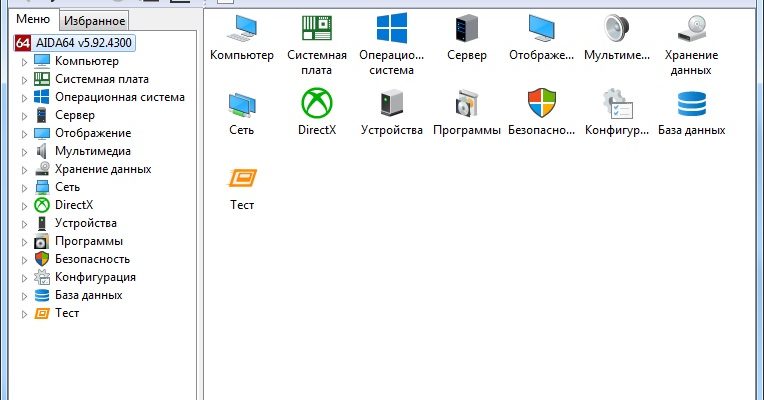Inexperienced people most often ask the question of how to find out what version of Windows is on their computer. This is due to the fact that when reviewing various instructions and manuals for solving these or those problems, their authors indicate the version of the operating system for which the described actions are applicable. On a layout of options new and old OS little differ, but to have an idea of”what I have Windows”, every owner of a personal computer, regardless of age and experience.
- How to know what version of Windows is installed on your computer and where you can see the current build of the system!
- Basic ways to determine the current version of the operating system
- Using the command”winver”
- Through the”Properties” window
- Through”Settings” in Windows 10
- Using the”Registry Editor” section
- Using the”systeminfo” command
- Using the WMIC command
- How to know the version of Windows on mobile devices
How to know what version of Windows is installed on your computer and where you can see the current build of the system!
It is quite easy to understand which version of the operating system from the family of Windows is installed on a personal computer or laptop, but beginners will not be able to tell the difference between the old Windows XP, Vista or the newer Windows 7. As for the newer operating systems (8, 8.1 or 10), things seem even more confusing for inexperienced users.
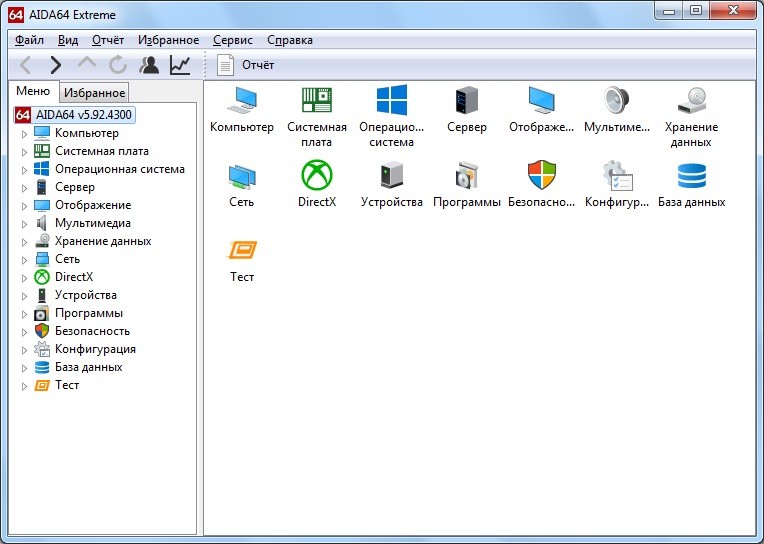
Installing third-party solutions like AIDA64 has its perks
Some professionals boast that they are able to determine the version by the appearance of the interface and desktop, but this is not always the right and correct approach. There are so many lightweight and heavyweight modifications to the user interface that even a seasoned administrator cannot tell the difference between XP and Windows 7 the first time around.
Important! To tell what version of the operating system is in front of a person, you can only get access to it. Experienced computer specialists will spend there a couple of seconds and immediately say the verdict, but it is better not to rely on intuition, and use the methods of verification, of which there are a huge number.
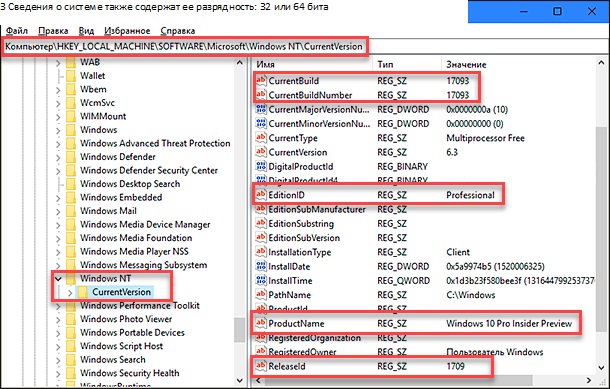
You can even check the OS number and OS name in the”Registry Editor”
You can see the current version in special applications which show all information about system resources:
- AIDA64. Monitor drivers, processor and video adapter temperatures, and display other detailed information about your system;
- CCleaner. A software for clearing disk cache and temporary junk files, and a registry defragmentation utility. Shows system data at the top of the main window;
- CPU-Z. An examination of the system hardware, including the CPU and whether it can be overclocked. The information you need can be found in the”About” tab;
- Everest, Analog to the first solution (AIDA64). It can not only determine the hardware, installed in your system, but also show the version and build information about the OS.
Warning! All of these tools are good for their purpose, but you should not download them just to find out the version of your operating system. If you already have such a software in your PC’s arsenal, you can go to it and check all the data.
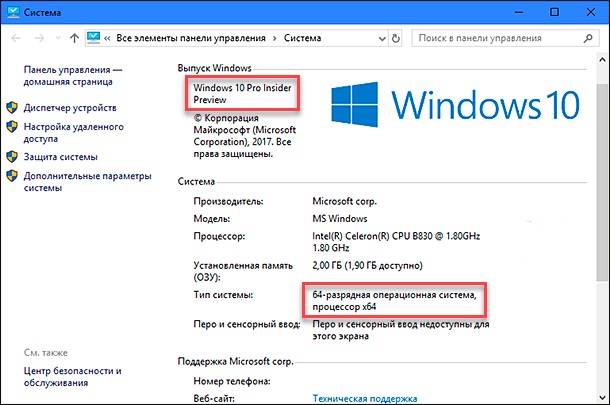
The system information also shows you if it is 32-bit or 64-bit.
Otherwise, it is advisable to use one of the many built-in verification tools. This is completely safe, while downloading a program from an unknown source, especially if done by a novice, may cause infection of your personal computer or laptop with virus programs. The following is considered how to see what Windows is installed using only the standard means of the operating system.
Basic ways to determine the current version of the operating system
There are many ways to find out the current version and build of the Windows operating system used on your phone or computer. All of the items described below are already built into the operating system. That means you don’t need to download any additional programs.
Using the command”winver”
How to know which direct X is installed on Windows 7
One of the easiest methods to instantly find out the data about the installed operating system, its version and build. To run the command, go to the”Run” window or the command line. In the first case go to the”Start” menu and find”Run” there or just press the”Win + R” key combination, which launches the window immediately.
Important! “Win” is a round key that opens the”Start” menu.
It remains to enter the command”winver” without quotation marks and click on the”OK” button. After a moment, the system will open another window with data, which is called”Windows Information”. This is where you will find all the information you are interested in: developer company, name and version, build, license and some other data.
Through the”Properties” window
Any version of the Windows operating system has a standard”System” application. It may also be called”System Properties” or”System Information”. It contains a number of data about Windows and its components. There are several ways to open this window:
-
- “Properties”. You need to go to the explorer and find”Computer” on the left. Just right-click on it and select”Properties” from the context menu;
- “Control Panel”. You should get to the Control Panel in any convenient way: through the Start menu or a shortcut. Next, you need to enter the word”System” or the phrase”System Information” in the window’s search box. Both lead to the same window. It is also referred to by the explorer;
!-6-!! desktop. If there is a”My Computer” icon on the desktop, you can go to the window from there as well. Again, click on the shortcut with PCM and select”Properties”.

Handy command, but unfortunately it doesn’t give information about network adapters, CPU, etc.
Pay attention! In addition to the software properties of the system, the window also displays information about the current configuration of the processor and RAM. If you wish, you can check the performance of the system by calculating a special performance index.
Through”Settings” in Windows 10
This method is only suitable for Windows 10, and most likely, if the user has a”Settings” section, he is using this version. Despite this, it is not unreasonable to learn some other useful information about the OS. There are three ways to get to this window:
-
- !-6-!! find the virtual Start menu button. In the menu that opens, there will be a gear icon. This is the link to”Settings”;
- right click on the same”Start” button and select the”Settings” item;
!-6-!! press the”Win + I” key combination. This is the fastest way, as the settings window will be launched instantly.
Important! After the transition, all that remains is to click on the”System” section and go to the”About System” tab. You can get to this window immediately by going to”Run” and entering the command”ms-settings: about”.
Using the”Registry Editor” section
This method is suitable for more or less knowledgeable users, as editing the system registry can cause serious damage to the OS.
Important! It is recommended to make a backup copy of all the branches before you start working with the registry.
The general procedure is as follows:
- Go to the”Run” window and enter the”regedit” command.
- Wait until go to”Registry Editor”.
- Go to: HKEY_LOCAL_MACHINE SOFTWARE Microsoft Windows NT CurrentVersion. You can also just copy it into the top search box.
- View the ProductName, EditionID, CompositionEditionID and CurrentBuild parameters.
- Close Registry Editor and exit.
Using the”systeminfo” command
Another command that displays data about the operating system is”systeminfo”. To execute it, you have to log on to your computer with administrator privileges and run the command line or use other methods:
-
- !-6-!” key combination”Win + R” and get to”Run”. You can also go to it from the”Start” menu. Type the command”cmd” to go to the console and wait for its execution, then write”systeminfo” and press”Enter”;
!-6-!! go to the”Start” menu and find there the program”Power Shell”. Write there the same command”systeminfo”.
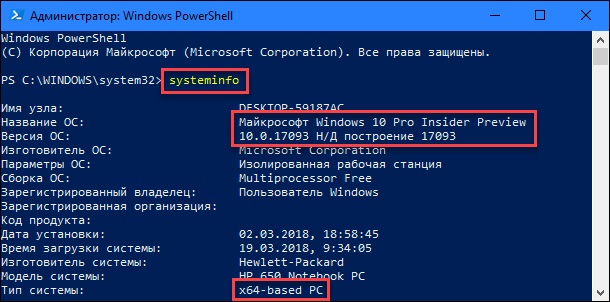
Running”systeminfo” Power Shell
Note! You don’t have to go to the command line or Power Shell. It is enough to type in the command”systeminfo” at the step of entering the window”Run” and it will be automatically processed by the command line.
Using the WMIC command
The last method is based on the WMIC command. It shows a brief information about the system. This can be entered using any of the means described above. You can use prefixes to return individual parameters. For example, WMIC OS GET Name returns the OS name and WMIC OS GET Version returns the OS version.
How to know the version of Windows on mobile devices
How do I know which direct X is installed on Windows 10
Windows mobile operating systems are a separate story. Information about the system can almost always be found in the same way:
- Go to the main applications menu.
- Find the”Settings” application shortcut.
- Enter”Device Info” and”Details” subsection.
- Find the”Software” item. That is where the OS name and version are listed.

WindowsMobile version data.
So, it has been discussed how to find out the version of winds not only on your computer or laptop, but also on your smartphone. It is extremely important to know, because the installation of the same Office or other programs will work correctly only with those operating systems that they support.
- Atomic Heart. 100% walkthrough of the game - 21. February 2023
- Sights of Kazakhstan, what to see first - 16. February 2023
- How to Get a Titanic Cat in Pet Simulator X – Titanic Cat - 29. December 2022

